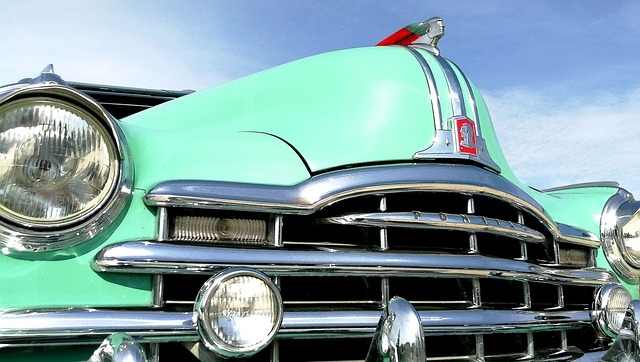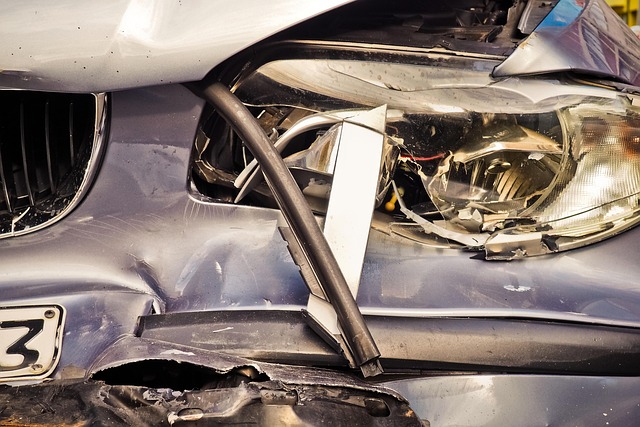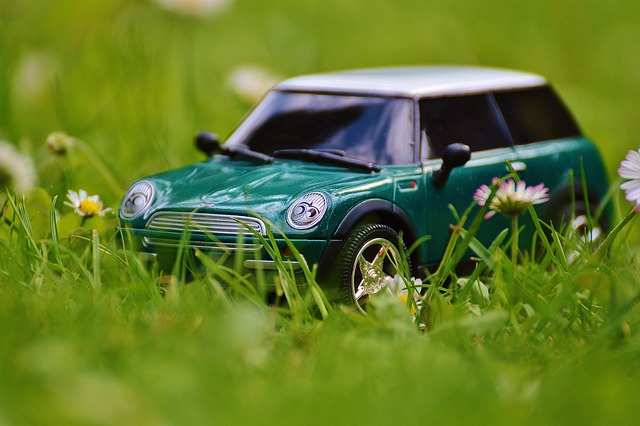Unveiling Success: Key Factors for Optimal Car Paint Restoration
Car paint restoration is a meticulous art that combines protection and visual enhancement. It requir…….
Car paint restoration is an art and science that involves reviving and rejuvenating the exterior finish of vehicles, restoring them to their original beauty or even enhancing their appearance beyond factory specifications. This process encompasses a range of techniques, from simple cleaning and waxing to more complex repainting and custom finishes. As automobiles play a pivotal role in our daily lives and cultural identity, maintaining and improving their aesthetic appeal has become a significant global pursuit. In this comprehensive article, we will explore the intricacies of car paint restoration, its impact on various industries, and its evolving nature in response to technological advancements, economic trends, and regulatory changes.
Car paint restoration is a meticulous process that aims to restore or enhance the outer layer of a vehicle’s body, which consists of several components:
Paint Layer: This is the visible surface that gives a car its distinctive color and finish. Over time, paint can become faded, chipped, or damaged due to various environmental factors and regular use.
Basecoat and Clearcoat: These are protective layers applied over the base paint. The basecoat provides color and protection, while the clearcoat adds shine and acts as a barrier against UV radiation and other elements.
Primers: Used as an adhesive between the paint and metal surface, primers prepare the car’s body for painting by providing a smooth, even surface.
Metal Surface: The underlying metal panel or body of the vehicle, which needs to be prepared and protected during the restoration process.
The history of car paint restoration dates back to the early days of automobiles when DIY enthusiasts would experiment with various methods to keep their vehicles looking pristine. Over time, the process evolved into a specialized trade, with professionals developing advanced techniques and products to meet the growing demand for vehicle aesthetics. Today, it is a critical aspect of automotive care, influencing not only individual car owners but also dealerships, body shops, and the entire automotive industry.
Car paint restoration’s global influence is evident in its widespread adoption across different regions and cultures. Key trends shaping this industry include:
Regional Preferences: Different countries have distinct preferences for vehicle colors, which impact the demand for specific paint restoration techniques and products. For instance, metallic and pearl finishes are more popular in North America, while matte and unique colors have a growing following in Asia Pacific.
Market Growth: The global automotive market’s continuous expansion has fueled the need for high-quality paint restoration services. According to a 2021 report by MarketsandMarkets, the global automotive refinishing market is projected to reach $197.6 billion by 2026, growing at a CAGR of 5.8% from 2021 to 2026.
Sustainability Focus: With increasing environmental awareness, there is a growing trend towards eco-friendly paint restoration products and techniques. Water-based paints and low-VOC (Volatile Organic Compound) options are gaining popularity as they offer better air quality during application and faster drying times.
Customization and Personalization: Modern car owners seek unique vehicles that reflect their personalities. Paint restoration companies are responding by offering personalized colors, effects, and finishes, allowing customers to create one-of-a-kind automotive masterpieces.
The economic aspects of car paint restoration are multifaceted, impacting both individual consumers and the broader economy:
| Aspect | Description |
|---|---|
| Market Dynamics | The market for paint restoration services is competitive, with a mix of independent shops, dealership-affiliated centers, and franchise operations. The availability of DIY kits and automated restoration equipment has also democratized access to these services. |
| Investment and Revenue | According to IBISWorld, the US automotive refinishing market generated $27.3 billion in 2021, with paint and coating being one of the top revenue contributors. This highlights the significant economic opportunity within the paint restoration sector. |
| Employment Impact | The industry employs a diverse range of professionals, from skilled technicians to sales associates and administrative staff. As demand grows, so does the need for specialized training and labor, contributing to local economies. |
| Economic Indicators | Strong car paint restoration markets often correlate with healthy automotive industries, reflecting overall consumer confidence and spending on personal vehicles. |
Technology plays a pivotal role in transforming car paint restoration from a manual endeavor into a highly efficient, precise, and customizable process:
Automated Polishing and Sanding: Advanced polishing machines and sanders allow for faster and more consistent results, reducing labor costs and improving efficiency. These tools are equipped with various pads and abrasives to handle different stages of the restoration process.
Computerized Color Matching: Modern automotive paint systems use advanced color matching software to precisely replicate original factory colors or create custom shades. This technology ensures a flawless finish, especially during repainting jobs.
Water-Based Paints and Coatings: As mentioned earlier, water-based paints offer environmental benefits while providing excellent coverage and durability. These products have gained popularity due to their low odor, faster drying time, and reduced VOC emissions.
3D Scanning and Digital Imaging: 3D scanning technology enables detailed digital mapping of a vehicle’s surface, allowing for precise measurement and analysis. This is particularly useful in complex restoration projects, ensuring accurate repairs and customizations.
AI and Machine Learning: Artificial Intelligence (AI) applications are emerging in paint restoration, offering potential benefits such as automated defect detection, optimized sanding patterns, and predictive maintenance for equipment.
The car paint restoration industry is subject to various policies and regulations that govern product safety, environmental impact, and consumer protection:
Environmental Standards: Many countries have strict regulations regarding VOC emissions from automotive paints and coatings. These standards encourage the development of eco-friendly products and processes, ensuring better air quality during application and cure.
Product Safety: Regulatory bodies set guidelines for the safety of paint restoration products, including ingredients, labeling, and handling instructions. This ensures that consumers and professionals using these products are protected from potential hazards.
Warranty and Insurance: Dealerships and manufacturers often provide warranties on new car finishes, influencing the restoration process. Insurance companies may also have specific requirements for repairing or replacing damaged paint as part of accident claims.
International Trade Agreements: Global trade agreements impact the availability and cost of raw materials and finished products used in paint restoration, affecting both local businesses and international operators.
Despite its numerous benefits, car paint restoration faces several challenges and criticisms that require careful consideration and strategic solutions:
Skill Shortage: The industry often struggles with a shortage of skilled technicians, which can lead to subpar work and safety concerns. Addressing this through training programs and apprenticeships is crucial for maintaining quality standards.
Counterfeit and Substandard Products: The availability of cheap, counterfeit, or low-quality restoration products on the market can undermine professional work and pose health risks. Stricter regulation and consumer education are needed to combat this issue.
Environmental Concerns: While technological advancements have improved environmental performance, the industry still faces criticism for its impact on air quality, especially in areas with poor ventilation during painting processes. Implementing green practices and local regulations is essential to mitigate these concerns.
Cost and Accessibility: Paint restoration services can be expensive, limiting accessibility for some vehicle owners. Offering affordable options, DIY kits, or community workshops could help address this challenge.
Real-world applications of car paint restoration offer valuable insights into successful projects and their impact:
Case Study 1: Classic Car Restoration – USA
A team of restorers in California undertook the task of restoring a 1967 Ford Mustang Fastback to its original glory. The process involved meticulous research, as the team sought to replicate the exact color and finish of the car’s factory specification. They used traditional methods, including hand sanding and applying custom-mixed paints, to achieve a flawless result. This project highlighted the artistry and craftsmanship required in classic car restoration, as well as the importance of attention to detail for historical accuracy.
Case Study 2: Mass-Market Car Refinishing – Europe
A large European dealership implemented an in-house paint restoration program to enhance customer satisfaction and reduce waiting times. They invested in advanced automated equipment, training their staff to use these tools effectively. The result was a significant increase in the number of vehicles undergoing refinishing, with customers appreciating the improved turnaround time and quality of work. This case study demonstrates how technology and professional training can revolutionize paint restoration processes in a mass-market setting.
Case Study 3: Eco-Friendly Transformation – Asia
A small, independent shop in Japan specialized in eco-friendly car transformations, using water-based paints and sustainable materials. They marketed their services to environmentally conscious consumers, who appreciated the reduced odor and faster drying times of water-based products. This business model not only addressed growing environmental concerns but also carved a unique niche in the market, attracting a dedicated customer base.
The car paint restoration industry is poised for further growth and innovation, with several potential areas of focus:
Sustainable Practices: As environmental awareness continues to grow, so will the demand for eco-friendly restoration methods. Developers will need to create products that are not only low-VOC but also biodegradable or recyclable, reducing their overall environmental impact.
Digital Transformation: The integration of digital technologies, such as AI and AR (Augmented Reality), will likely become more prevalent. These tools can enhance customer experiences through virtual design consultations, improve operational efficiency, and enable remote diagnostics for equipment maintenance.
Customization and Personalization: With consumers seeking unique vehicles, the industry will see an increase in custom finishes, including graphics, metallics, and unique color combinations. This trend requires advanced techniques and a deep understanding of automotive aesthetics.
Global Standardization: Despite regional preferences, there is a growing need for standardized practices and product formulations to ensure consistency in quality and performance across different markets. International collaborations and agreements could facilitate this process.
Car paint restoration is more than just a cosmetic treatment; it is a dynamic industry that impacts vehicle aesthetics, ownership experiences, and even broader economic sectors. As technology advances and consumer preferences evolve, the field continues to adapt, offering innovative solutions and personalized services. By embracing sustainability, digital transformation, and customization, car paint restoration will remain a vital component of the automotive industry, ensuring that vehicles not only look their best but also contribute to a more sustainable and technologically advanced future.
Q: How often should I get my car painted?
A: The frequency depends on various factors, including driving conditions, parking habits, and exposure to harsh environments. As a general rule, if your car’s paint shows significant fading, chipping, or scratch marks, it’s time for consideration. Regular washing and waxing can help maintain the finish between professional restorations.
Q: What are the signs I need professional paint restoration?
A: Look for deep scratches, rust spots, bubbles in the paint, uneven surfaces, or significant color variations. These issues may indicate structural damage or poor repair work that requires expert attention to restore your vehicle’s beauty and value.
Q: Are there DIY car paint restoration kits worth it?
A: For minor touch-ups and basic maintenance, DIY kits can be a cost-effective solution. However, for significant restorations, especially on valuable or classic cars, professional services are recommended. DIY kits may not provide the same level of expertise, precision, and quality as experienced restorers.
Q: How do I choose the right paint color for my car?
A: Consider your personal preference, vehicle model, and current market trends. Use digital tools or consult professionals who can help visualize various options on your car’s 3D model. Factory color swatches and computer-aided color matching are valuable resources to ensure an accurate match.
Q: Can paint restoration improve fuel efficiency?
A: While a smooth, clean surface contributes to better aerodynamic performance, the impact on fuel efficiency is relatively minor compared to other factors like tire pressure and engine optimization. However, a well-restored car might appeal to environmentally conscious owners who choose efficient vehicles.

Car paint restoration is a meticulous art that combines protection and visual enhancement. It requir…….

For optimal car paint restoration, begin with a meticulous assessment and thorough surface preparati…….

Before restoring car paint, conduct a thorough inspection, document existing damage, remove rust, an…….

Car paint fading is a common issue caused by harsh weather, improper washing, and environmental cont…….

Assess vehicle damage, from minor chips to structural issues, and consider professional repair for e…….

Car paint restoration revitalizes damaged vehicle finishes, enhancing aesthetics and resale value wh…….